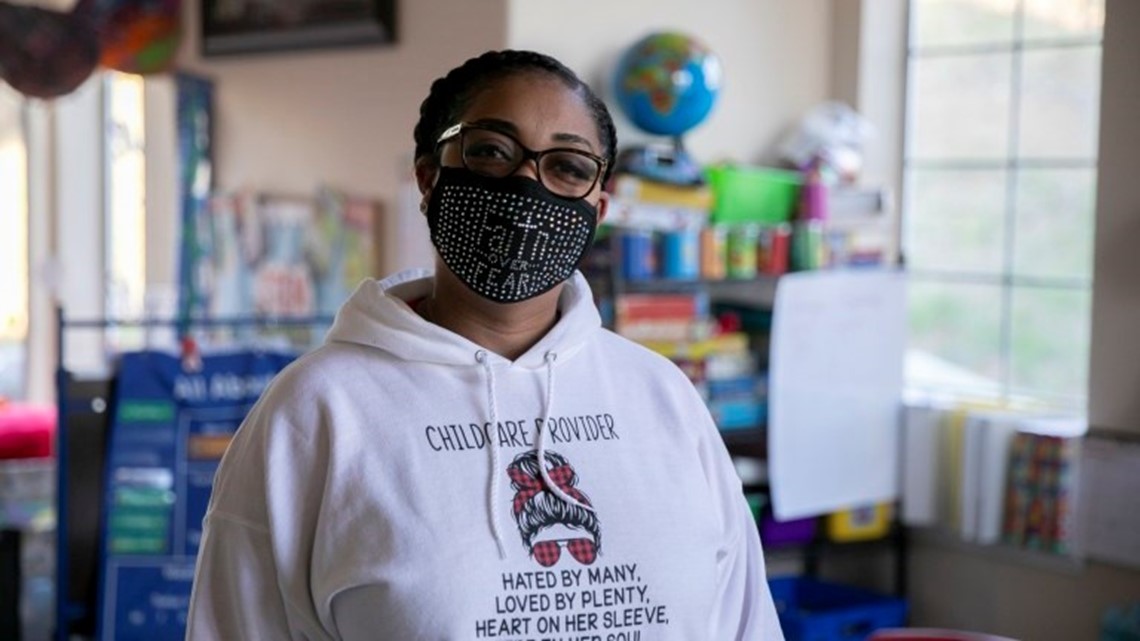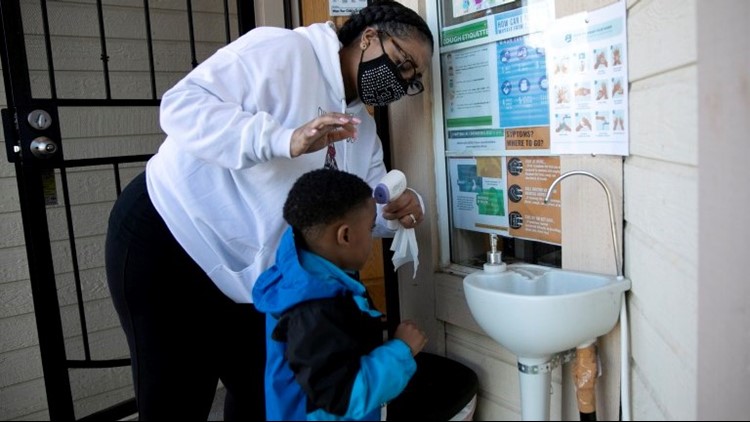CALIFORNIA, USA — California lawmakers and thousands of family child care providers reached a tentative agreement to provide one-time stipends and paid-days off for COVID-19 to help ease the burden of the pandemic.
Funding was approved by the Senate Budget Committee last week and is expected to be approved by the Legislature within days. The $144 million in federal funds are part of a larger economic recovery package announced by the governor this week worth $9.6 billion. It represents the first major victory for the union since being formally recognized by Gov. Gavin Newsom in 2019.
This agreement is an important step in ongoing negotiations for a master contract between the state and the newly formed Child Care Providers United union. It’s been 17 years since child care providers began organizing and trying to be recognized by the state as a labor force, said the union’s vice chair, Johanna Hester.
“This is a huge relief for family child care providers,” she said.
The agreement before the Legislature includes:
- A one-time stipend for providers of $525 per child in subsidized care as of Nov. 2020
- 16 additional paid non-operational days for COVID-19 closures, bringing total paid non-operational days to 40
- Formation of a working group of state and union representatives to review additional funding through the federal CARES Act, including a waiver of family fees and support for providers who shut down
In addition, the state is also allocating millions more to extend and expand emergency child care for essential workers.
The union represents 40,000 licensed and exempt family care providers who care for children receiving state child care subsidies. Licensed family child care sites are run out of personal homes and can enroll up to 8 or 14 children. Exempt providers are friends or family members who care for a child or family of children and get paid through the state program.
In 2019, Newsom signed legislation recognizing the union and granted collective bargaining rights to Child Care Providers United so it could negotiate with the state over benefits, payment and training. Previous governors had vetoed these efforts, including Jerry Brown, who cited budget challenges, and Arnold Schwarzenegger, who quashed similar bills three times saying they would increase costs to the state.
The state subsidizes child care for about 360,000 children.
Newsom is specifically interested in early childhood programs and has put forth several proposals to expand care and support. Both budget items before the Legislature — one-time stipend and additional paid days — were part of the governor’s budget package for 2020-21.
The pandemic has resulted in higher costs and loss of income for providers, according to a Legislative Analyst’s Office review of the governor’s proposals.
New federal guidelines issued early in the pandemic and updated in December included increased cleaning and requirements for social distancing and hand-washing stations. State rules, first released in April and later updated, limited the number of children a site could accommodate based on teacher-student ratios and small group cohorts, causing many to have to downsize last year, according to the union. Thousands ended up closing their doors.
For now, child care providers are pleased with the one-time help.
Many child care sites lost their small charges at the beginning of the pandemic as parents lost jobs or chose to keep their children at home, said Lucre-ce Lester, a provider in Contra Costa County. Lester operates a large family child care home, meaning she can care for up to 14 children.
Lester worried as families withdrew their children: Her childcare is the sole income for her family of six. The state did continue to pay providers for state-subsidized children for a few months, but it was not enough to make ends meet.
Then COVID-19 came to her door.
Lester had to close her business down three times in the last year because of potential COVID-19 exposures. In the fall, she and her family actually contracted the virus and she closed her child care for 21 days.
“That was a scary time and it wasn’t due to any negligence of my own,” said Lester, who is a member of the bargaining team. “We were doing everything we could to make sure that we were keeping myself and my family and all of the families in my care safe. For it to come in was really shocking and scary.”
When child care providers close they don’t usually get paid — that’s why the allotment of paid non-operational days makes a difference, she said.
Lester cares for kids as young as infants up to 12-years-old, so she’s not only changing diapers and singing “Wheels on the Bus,” she’s also navigating virtual fifth grade. Lester also had to decrease staff hours even as her expenditures for cleaning, food and supplemental materials for the kids hit the roof.
“I feel like I’ve been on automatic pilot since this whole thing happened,” she said. “You are just trying to get through the day and do everything you have to do. At the end of the day I’m exhausted.”


For Lester, staying open meant she and her husband opted to defer their mortgage payments.
“We had to do that in order to be okay,” she said. “There are things we’ve had to do in order to make sure we are able to stay afloat.”
Payments resume next month.
Meanwhile, the union — a partnership between Service Employees International Union and UDW/American Federation of State, County and Municipal Employees labor groups — continues to negotiate a broader contract with the state to cover pay increases, benefits, training and professional development.
Low pay for child care providers drove the group to organize, Hester said. The median income among its mainly female providers of color is $12 an hour and more than half use government assistance programs for their own families, according to the union.
“They were already struggling pre-pandemic to keep business afloat,” Hester said. “Somebody has to take care of the kids.”
CalMatters coverage of early childhood issues is supported by grants from First 5 Los Angeles and The Ralph M. Parsons Foundation.
CALmatters.org is a nonprofit, nonpartisan media venture explaining California policies and politics



